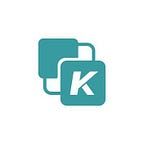KDAG RoadMap Progress
Up to now, we have completed the coding of the core code modules in roadmap, especially the coding of the consensus engine of KDAG integrating hashgraph in the first part of Roadmap, the milestone has been basically completed, and the detailed part needs to be optimized and perfected with the design of KDAG node and KDAG hub.
The design of the second, third and fourth part of Roadmap is slightly behind schedule due to the impact of COVID-19 epidemic. Second, third and fourth part of Roadmap focuses on the design of KDAG HUG Protocol and SURF EFFECT algorithm, this part of the development and design work is carried out in parallel, the coding and unit test code of the module is nearly completed, the local test of the interface is nearly completed, and the test pass rate is 80%. However, the biggest problem facing this part is the integration of the module into the P2P Gossip network and the handling of the embedded transaction security fault tolerance mechanism. Many details and the bonding of the whole network components still need to be polished, parameters adjusted, edge scenarios perfected, and tests strengthened.
In the fifth and sixth part of the Roadmap, the design work of KDAG nodes and HUB is carried out simultaneously, and part of the development and design work has been started.
Combined with the roadmap, the completion status of the core components module of the heavy difficulty is as follows.
1. KDAG: The core module of KDAG blockchain network, which maps the hash map to the BFT consensus engine of the blockchain. (50% complete, details to be improved)
• Designing new Header, Block and Blockchain data structures, mapping Hashgraph data structures to block data structures, designing Byzantine Fault Tolerance (BFT) consensus algorithms that cope with the number and capacity of malicious members.
• Design Hug Protocol to enable far behind nodes to catch up the tip of the hashgraph without having to synchronize all missed events
• KDAG “surf effect” algorithm: enables secure updating of the peer list when participants join or leave the network.
2. EVM: Lightweight EVM virtual machine with a common interface, smart contract interpreter. (40% complete, details to be refined)
• Integration compatible with Ethernet EVM account structure and smart contracts — 50% complete
• Integration with KDAG consensus engine, especially HUG Protocol — 30% complete
• Open HTTP API — 20% complete
3. KDAG Node: system component running KDAG validator (i.e. EVM comes with KDAG and KDAG specific features) (30% complete)
• Built-in EVM built-in account model, create Genesis blocks using pre-set accounts, generate local token — 30% complete
• Implement logical mechanism to reward blocks and assign them to verifiers — 20% complete
• Implement PoA mechanism to link KDAG’s hug protocol to smart contracts as a current alternative to PoS — 20% complete
• POS logical mechanism — to be completed
• STUN/TURN service and node service discovery — 40% complete Integrate STUN/TURN servers into KDAG node nodes, enable NAT when peer peers are located after NAT traversal
4. KDAG Hub: network integration node node, integrated token operation and reward eco-governance system, and service service for eco-operation.
• Test network online — to be completed
• Mainnet online — to be completed
5. Mobile SDK: KDAG app for Android and iOS, easy for mobile to join KDAG network (20% complete)
This part of the code is mainly integrated in the KDAG code directory
6. Client-side tools: a set of tools to interact with KDAG nodes (20% complete)
• Evm nodejs sdk — 30% complete
• Evm cli tool — 20% complete
• KDAG wallet — to be completed
